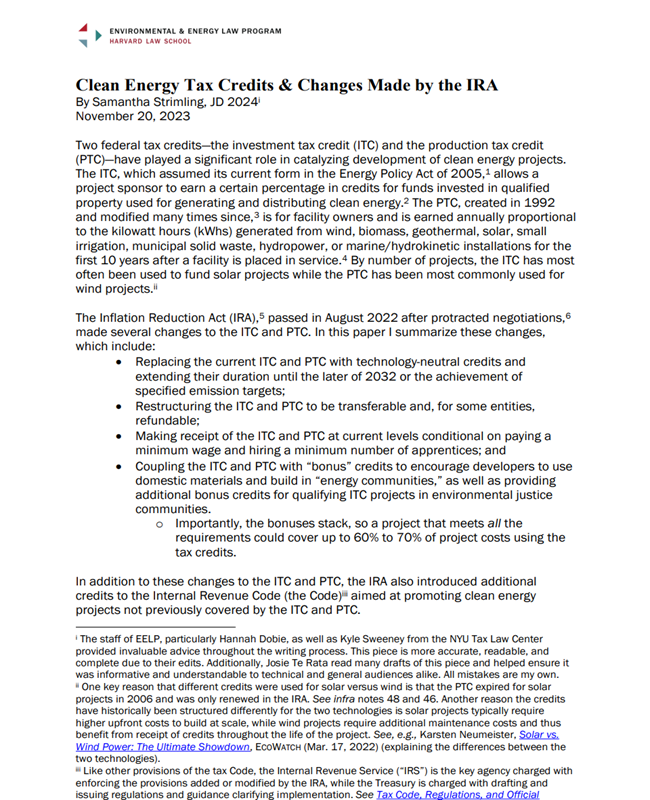Two federal tax credits—the investment tax credit (ITC) and the production tax credit (PTC)—have played a significant role in catalyzing development of clean energy projects. The ITC, which was created by the Energy Policy Act of 2005, allows a project sponsor to earn a certain percentage in credits for funds invested in qualified property used for generating and distributing clean energy. The PTC, created in 1992 and modified many times since, is for facility owners and is earned annually proportional to the kilowatt hours generated from wind, biomass, geothermal, solar, small irrigation, municipal solid waste, hydropower, or marine/hydrokinetic installations for the first 10 years after a facility is placed in service. By number of projects, the ITC has most often been used to fund solar projects while the PTC has been most commonly used for wind projects.
The Inflation Reduction Act (IRA) made significant changes to the ITC and PTC. If used to their full capacity, the credits as modified by IRA could create a sea change in clean energy financing. In this paper, the author explains the changes and how they may impact renewable energy financing. The author also outlines the additional credits that the IRA introduces that are aimed at promoting clean energy projects not previously covered by the ITC and PTC. This paper is intended for both general and technical audiences. The author explains the central changes to the ITC/PTC in text but provides more details in the accompanying tables.
More About this Resource
Publisher: Environmental & Energy Law Program
Date: November 20, 2023
Type: Report
Sector(s): Other Climate
State(s): None
